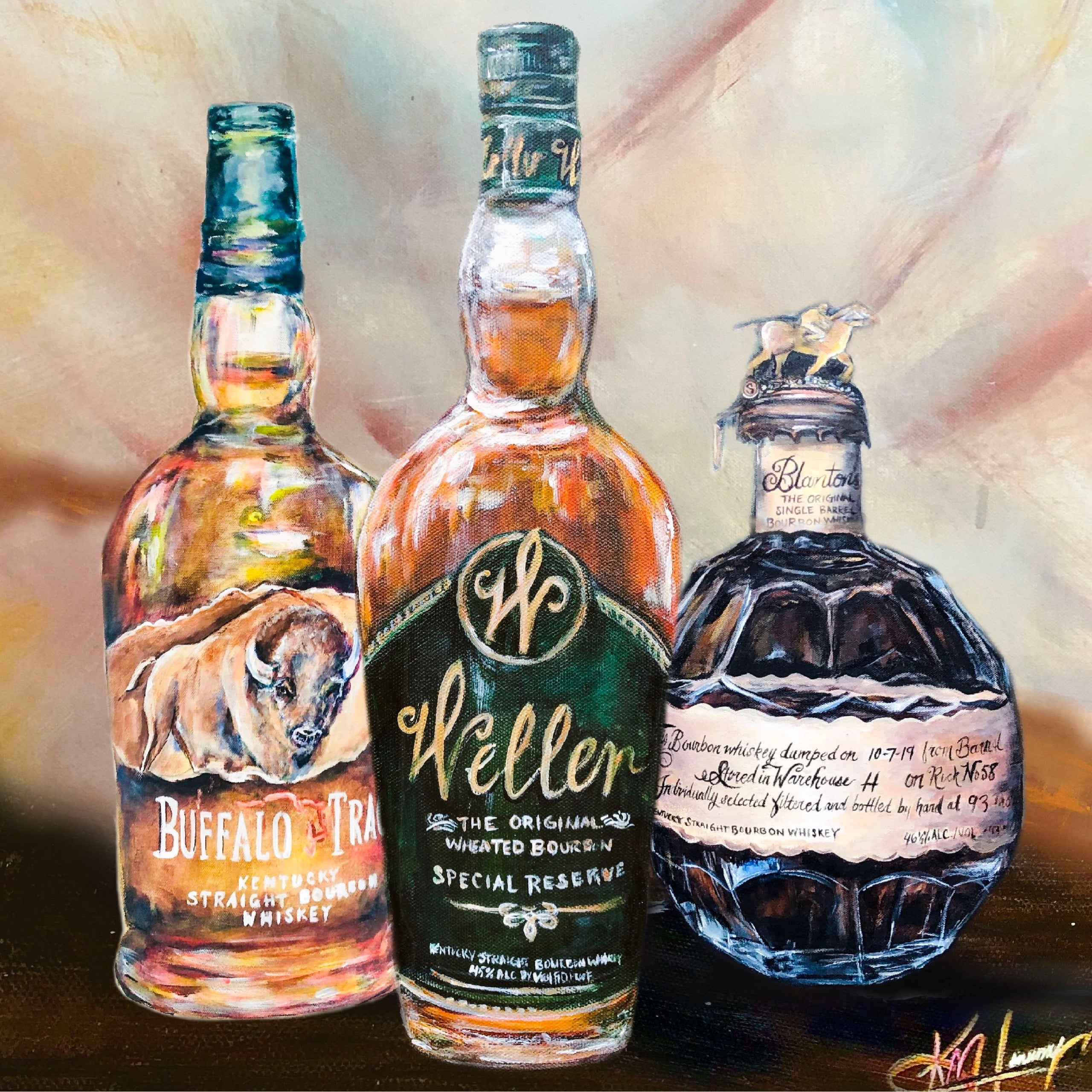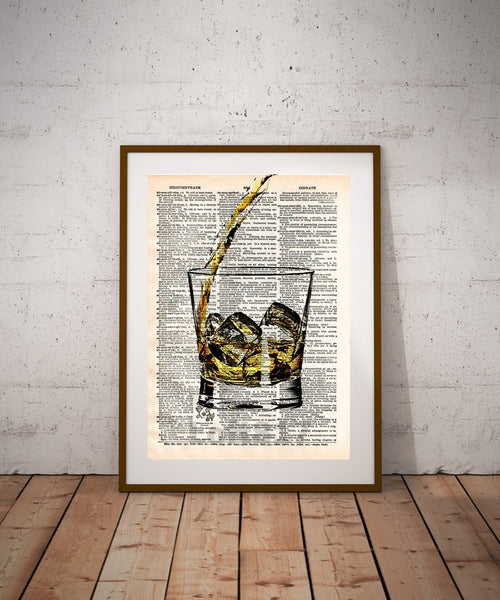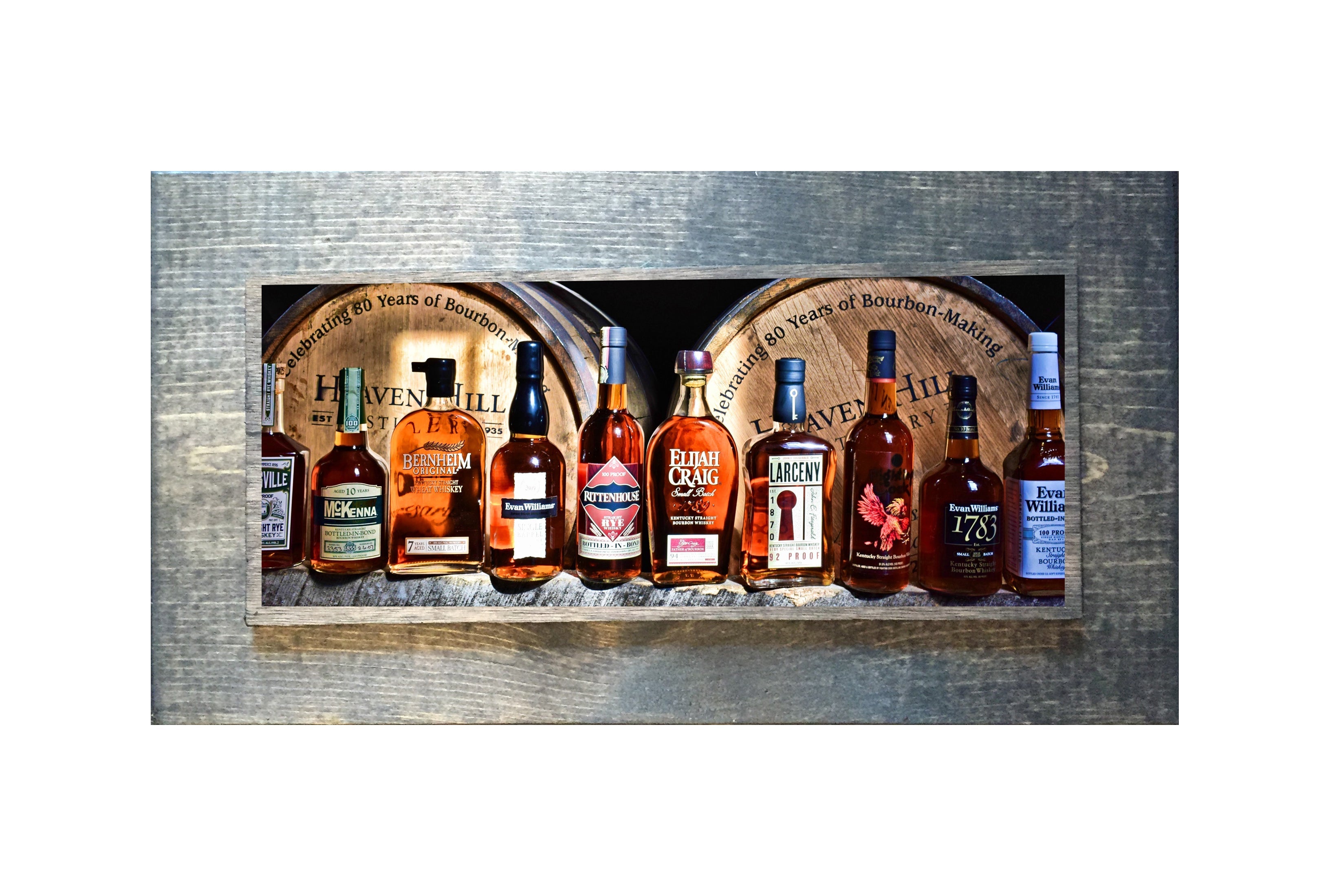Introducing the Charm of Bourbon Art: A Homage to Craft Distillers
Wiki Article
Catching the Significance of Whiskey Art Through Special Visual Depictions and Styles
The art of bourbon expands past the fluid itself, materializing with a range of aesthetic representations that encapsulate its storied heritage and craftsmanship. What continues to be to be revealed is exactly how these progressing styles reflect not just the whiskey itself but additionally the changing landscape of artistic interpretation. Whiskey Art.The Background of Scotch Art

As bourbon manufacturing spread, so too did the wish to elevate its experience through art. From the intricate engravings on very early casks to the fancy labels of modern containers, each element shows a special imaginative vision, acting as a visual story of the bourbon's heritage.
In the 18th and 19th centuries, the rise of the commercial transformation further improved scotch art, leading to ingenious packaging and advertising and marketing that recorded customer interest. Artists and developers began trying out visual appeals, imbuing whiskey-related imagery with symbolic significances that communicated ideas of custom, area, and craftsmanship.
Today, bourbon art remains to evolve, mixing conventional techniques with contemporary art types. Whiskey Art. This recurring discussion between the spirit and its visual representation underscores the long-lasting bond in between scotch and society, improving the overall experience for fanatics worldwide
Iconic Container Layouts
While several aspects add to the attraction of whiskey, legendary bottle designs play an essential function fit consumer understanding and enhancing the overall experience. The aesthetic presentation of bourbon containers is not merely a visual consideration; it functions as a bridge between the item and the consumer, stimulating feelings and establishing assumptions.Distinct shapes, materials, and closures can elevate a whiskey brand's identity, making it quickly identifiable on crowded shelves. For instance, the timeless Glenfiddich bottle, with its classy conical silhouette, shares a sense of custom and craftsmanship, while the strong, modern style of the Balvenie container reflects innovation and refinement. The use of tinted glass or one-of-a-kind appearances can recommend the quality and character of the bourbon within.
Iconic layouts typically integrate elements of social heritage, representing the brand's background and link to its origins. Brand Names like Jack Daniel's make use of an uncomplicated, robust layout that resonates with its American bourbon heritage. Ultimately, the influence of container layout expands past mere capability; it envelops the essence of the brand, welcoming customers to delight and discover in the rich tapestry of bourbon culture.
Tag Art Work and Branding
Container styles commonly set the stage for what consumers can expect, however tag art work and branding play a similarly substantial function in interacting a bourbon's identification. The label works as the initial point of contact between the consumer and the product, encapsulating the significance of the scotch within its visual elements.Efficient tag art work integrates reference shade, typography, and images to create a story that reverberates with the brand's heritage and target audience. For example, a label featuring detailed images and vintage fonts might evoke a sense of practice and workmanship, interesting lovers. In contrast, bold shades and modern layout aspects might draw in a younger group seeking innovation and enjoyment.


Digital Photography and Visual Narration
Recording the significance of bourbon via photography and visual storytelling is an art type that elevates the brand experience. This medium goes beyond simple item depiction, delving right into the intricate narratives that surround each container. By using engaging imagery, photographers can stimulate emotions that reverberate with consumers, inevitably creating a much deeper connection to the scotch brand name.Visual storytelling in whiskey photography usually makes use of abundant textures, lights, and make-up to highlight the unique attributes of the spirit. The interaction of light and shadow can highlight the amber colors of whiskey, while the selection of background elements-- such as rustic barrels or stylish glasses-- can more info here strengthen the brand's heritage or lifestyle associations.
Moreover, catching the ritualistic aspects of scotch usage, from the pouring to the tasting, invites audiences into a sensory experience, allowing them to picture the flavors and fragrances that wait for. Each photograph not just showcases the item however also narrates of craftsmanship, tradition, and the minutes that bourbon can improve - Whiskey Art. Thus, digital photography comes to be an effective tool in articulating the identification of scotch brands, placing them within the wider cultural landscape
Arising Patterns in Whiskey Art
The evolution of bourbon art is increasingly shaped by modern fads that reflect more comprehensive societal shifts and customer choices. This shift not only highlights the relevance of sustainability however additionally enhances the narrative bordering bourbon manufacturing.In addition, electronic art has actually risen in popularity, enabling ingenious depictions of scotch. Artists are leveraging innovation to craft immersive experiences, such as increased reality setups that involve visitors and offer a much deeper understanding of bourbon's cultural importance. This pattern additionally includes social media sites platforms, where visually striking material amasses focus and fosters community amongst fanatics.
Additionally, partnerships in between bourbon brand names and artists are coming to be extra commonplace. These partnerships yield limited-edition packaging designs and unique artworks that celebrate both the craftsmanship of whiskey and the creativity of musicians. As whiskey art continues to develop, these emerging patterns will most certainly form its future, cultivating a dynamic junction of society, sustainability, and innovation within the scotch neighborhood.
Conclusion
To conclude, the art of bourbon incorporates a varied variety of aesthetic representations that reflect its rich heritage and craftsmanship. From renowned bottle designs and detailed tag artwork to engaging photography, each element contributes to a more comprehensive story that improves the consumer's experience. As emerging fads, such as electronic art and sustainability, continue to form this imaginative landscape, the diverse identification of bourbon stays an enduring resource of cultural connection and expedition.

In final thought, the click here to read art of scotch includes a diverse variety of visual representations that show its rich heritage and workmanship.
Report this wiki page